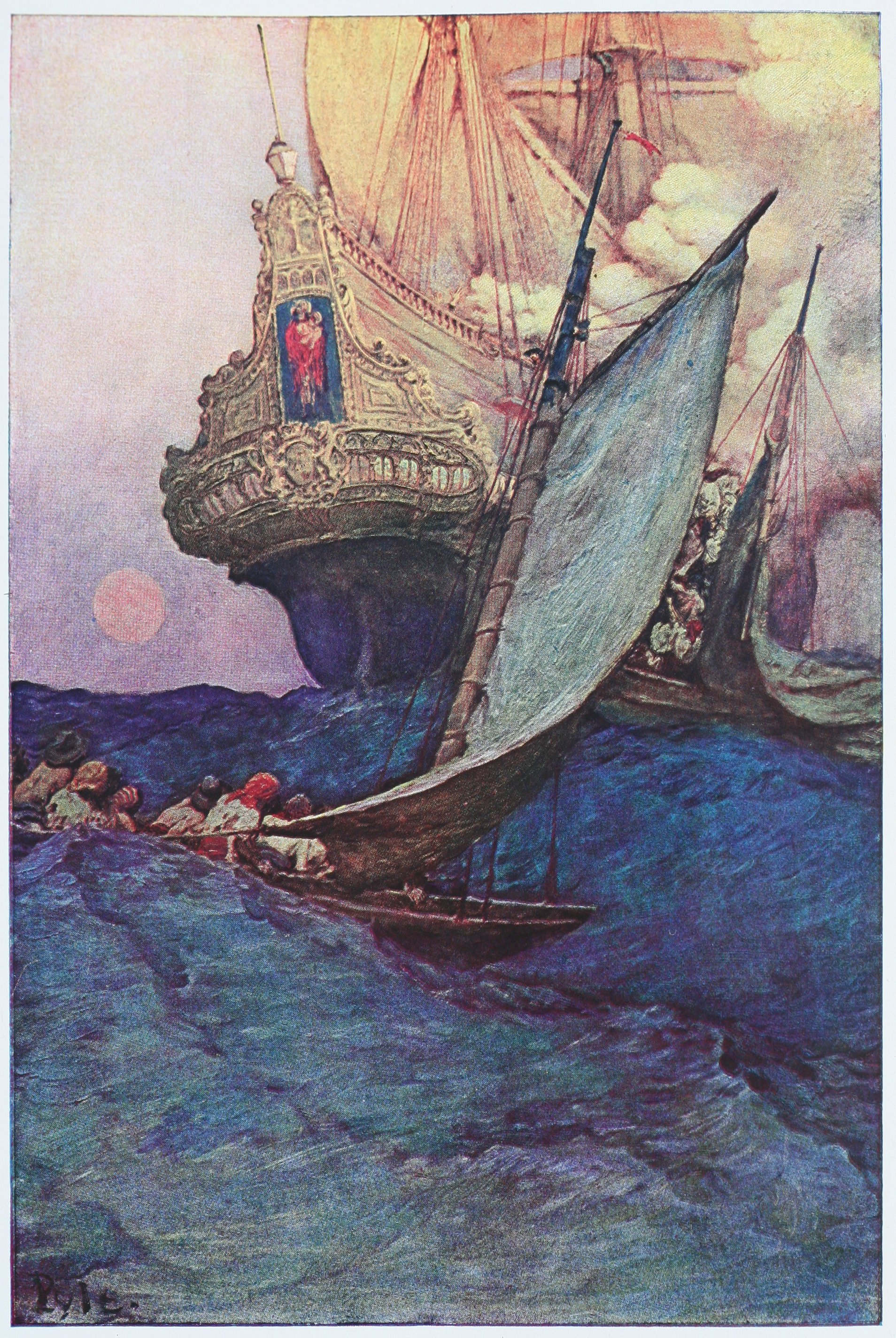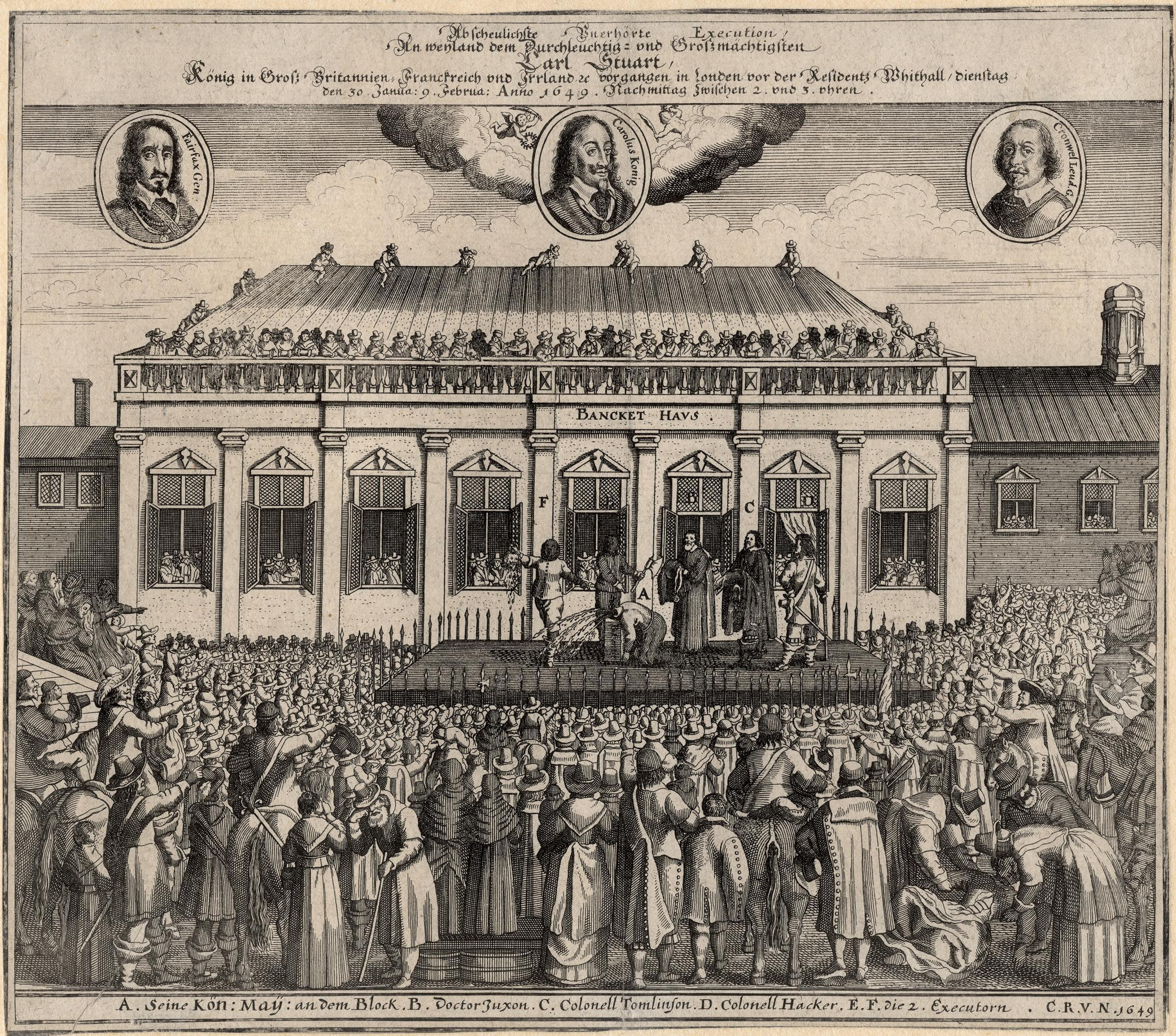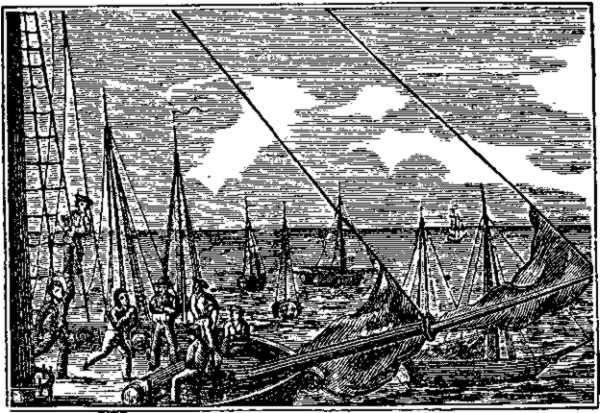|
Red Legs Greaves
"Red Legs" Greaves was a Scottish buccaneer active in the Caribbean and the West Indies during the 1670s. His nickname came from the term ''Redlegs'' used to refer to the class of poor whites who lived on colonial Barbados. Although considered a successful pirate during his career, most notably his raid of Margarita Island in the mid-1670s, he is best known for his escape from prison during an earthquake. His story does not appear in historical records of the era and he may have been fictional. Authenticity Greaves’ story does not appear in period accounts of Margarita, pirate trials, or other documents. It first appears in A. Hyatt Verrill's 1923 ''In the Wake of the Buccaneers'', but no sources are cited. Verrill included Greaves in several of his later books, and Philip Gosse repeated the story in his ''Pirates' Who's Who'' (1924). Verrill travelled widely in the West Indies, and conceivably came across this story, perhaps as a folk tale or local legend, but he also has ... [...More Info...] [...Related Items...] OR: [Wikipedia] [Google] [Baidu] |
Buccaneer
Buccaneers were a kind of privateers or free sailors particular to the Caribbean Sea during the 17th and 18th centuries. First established on northern Hispaniola as early as 1625, their heyday was from Stuart Restoration, the Restoration in 1660 until about 1688, during a time when governments were not strong enough and did not consistently attempt to suppress them. Originally the name applied to the landless hunters of wild boars and cattle in the largely uninhabited areas of Tortuga (Haiti), Tortuga and Hispaniola. The meat they caught was smoked over a slow fire in little huts the French called ''boucans'' to make ''viande boucanée'' – ''jerked meat'' or ''jerky'' – which they sold to the French corsairs, corsairs who preyed on the (largely Spanish) shipping and settlements of the Caribbean. Eventually the term was applied to the corsairs and (later) privateers themselves, also known as the Brethren of the Coast. Though corsairs, also known as ''filibusters'' or ''freeb ... [...More Info...] [...Related Items...] OR: [Wikipedia] [Google] [Baidu] |
Nevis
Nevis is a small island in the Caribbean Sea that forms part of the inner arc of the Leeward Islands chain of the West Indies. Nevis and the neighbouring island of Saint Kitts constitute one country: the Federation of Saint Kitts and Nevis. Nevis is located near the northern end of the Lesser Antilles archipelago, about east-southeast of Puerto Rico and west of Antigua. Its area is and the capital is Charlestown. Saint Kitts and Nevis are separated by a shallow channel known as "The Narrows". Nevis is roughly conical in shape, with a volcano known as Nevis Peak at its centre. The island is fringed on its western and northern coastlines by sandy beaches composed of a mixture of white coral sand with brown and black sand eroded and washed down from the volcanic rocks that make up the island. The gently-sloping coastal plain ( wide) has natural freshwater springs as well as non-potable volcanic hot springs, especially along the western coast. The island was named ''O ... [...More Info...] [...Related Items...] OR: [Wikipedia] [Google] [Baidu] |
17th-century Pirates
The 17th century lasted from January 1, 1601 ( MDCI), to December 31, 1700 ( MDCC). It falls into the early modern period of Europe and in that continent (whose impact on the world was increasing) was characterized by the Baroque cultural movement, the latter part of the Spanish Golden Age, the Dutch Golden Age, the French '' Grand Siècle'' dominated by Louis XIV, the Scientific Revolution, the world's first public company and megacorporation known as the Dutch East India Company, and according to some historians, the General Crisis. From the mid-17th century, European politics were increasingly dominated by the Kingdom of France of Louis XIV, where royal power was solidified domestically in the civil war of the Fronde. The semi-feudal territorial French nobility was weakened and subjugated to the power of an absolute monarchy through the reinvention of the Palace of Versailles from a hunting lodge to a gilded prison, in which a greatly expanded royal court could be more ea ... [...More Info...] [...Related Items...] OR: [Wikipedia] [Google] [Baidu] |
1649 Births
Events January–March * January 4 – In England, the Rump Parliament passes an ordinance to set up a High Court of Justice, to try Charles I for high treason. * January 17 – The Second Ormonde Peace concludes an alliance between the Irish Royalists and the Irish Confederates during the War of the Three Kingdoms. Later in the year the alliance is decisively defeated during the Cromwellian conquest of Ireland. * January 20 – Charles I of England goes on trial, for treason and other "high crimes". * January 27 – King Charles I of England, Scotland and Ireland is found guilty of high treason in a public session. He is beheaded three days later, outside the Banquet Hall in the Palace of Whitehall, London. * January 29 – Serfdom in Russia begins legally as the Sobornoye Ulozheniye (, "Code of Law") is signed by members of the Zemsky Sobor, the parliament of the estates of the realm in the Tsardom of Russia. Slaves and free peasants are con ... [...More Info...] [...Related Items...] OR: [Wikipedia] [Google] [Baidu] |
Irish Slave Myth
The Irish slaves myth is a fringe pseudohistorical narrative that conflates the penal transportation and indentured servitude of Irish people during the 17th and 18th centuries, with the hereditary chattel slavery experienced by the forebears of the African diaspora. Some white nationalists, and others who want to minimize the effects of hereditary chattel slavery on Africans and their descendants, have used this false equivalence to deny racism against African Americans African Americans (also referred to as Black Americans and Afro-Americans) are an ethnic group consisting of Americans with partial or total ancestry from sub-Saharan Africa. The term "African American" generally denotes descendants of ens ... or claim that African Americans are too vocal in seeking justice for historical grievances. It also can hide the facts around Irish involvement in the transatlantic slave trade. The myth has been in circulation since at least the 1990s and has been disseminat ... [...More Info...] [...Related Items...] OR: [Wikipedia] [Google] [Baidu] |
Oliver Cromwell
Oliver Cromwell (25 April 15993 September 1658) was an English politician and military officer who is widely regarded as one of the most important statesmen in English history. He came to prominence during the 1639 to 1651 Wars of the Three Kingdoms, first as a senior commander in the Parliamentarian army and then as a politician. A leading advocate of the execution of Charles I in January 1649, which led to the establishment of the Republican Commonwealth of England, Scotland and Ireland, he ruled as Lord Protector from December 1653 until his death in September 1658. Cromwell nevertheless remains a deeply controversial figure in both Britain and Ireland, due to his use of the military to first acquire, then retain political power, and the brutality of his 1649 Irish campaign. Educated at Sidney Sussex College, Cambridge, Cromwell was elected MP for Huntingdon in 1628, but the first 40 years of his life were undistinguished and at one point he contemplated emigration to ... [...More Info...] [...Related Items...] OR: [Wikipedia] [Google] [Baidu] |
Louis Le Golif
The ''Memoirs of Louis Adhemar Timothée Le Golif, called Borgnefesse, Captain of the Buccaneers'' (''Cahiers de Louis Adhemar Timothée Le Golif, dit Borgnefesse, capitaine de la flibuste'') was published in French in 1952 by Grasset. This account of the voyages, gallant conquests, battles, boarding and pillaging of a prominent character in the Caribbean Sea during the time of Louis XIV was presented in 1952 as the authentic memoirs of 17th century freebooter captain Louis Le Golif. His manuscript, discovered by chance in an old trunk following the bombing of Saint-Malo in 1944, was deciphered by Gustave Alaux and Albert t'Serstevens. An English translation was published in 1954 as ''The Memoirs of a Buccaneer: Being a Wondrous and Unrepentant Account of the Prodigious Adventures and Amours of King Louis XIV’s Loyal Servant, Louis Adhemar Timothée Le Golif, Known for His Singular Wound As Borgnefesse, Captain of the Buccaneers, Told by Himself''. For a long time accepted by ... [...More Info...] [...Related Items...] OR: [Wikipedia] [Google] [Baidu] |
Eric Cobham And Maria Lindsey
Eric Cobham ( 1700 – 1760 or after) a pirate in the early eighteenth century who with his wife, Maria Lindsey, practiced piracy in the Gulf of St. Lawrence from their base in Newfoundland. They were both born in England – Eric Cobham from Poole and Maria Lindsey from Plymouth. History According to Philip Gosse in ''The Pirate's Who's Who'' (1924) and Horwood and Butts in ''The Pirates and Outlaws of Canada'' (1984), the Cobhams were among the first St. Lawrence pirates to become known for giving "no quarter," meaning all the captured crews were killed and the ships sunk. They were famous for their sadism and cruelty, including using survivors for target practice. They were pirates between 1720s–40s after which they relocated to Le Havre, France. They became members of the community and Eric was appointed a judge. Maria could not make the adjustment and went insane, finally committing suicide (or possibly being murdered by Eric). Eric had an attack of conscience after he ... [...More Info...] [...Related Items...] OR: [Wikipedia] [Google] [Baidu] |
Charlotte De Berry
Charlotte de Berry (born 1636, England) was a female pirate captain. Authenticity The earliest known reference to Charlotte de Berry comes from publisher Edward Lloyd's 1836 “ penny dreadful” called ''History of the Pirates''. Lloyd was known for producing other similar compilations of shocking and gory tales, often plagiarized. There is no evidence for de Berry's existence in 17th-century sources, though many elements of her story have parallels in other literature popular in Lloyd's day by authors such as Frank Marryat, Voltaire, and Edward Bulwer-Lytton. Retellings of de Berry's tale after 1836 have almost always mirrored Lloyd's original, sometimes with slight variations. History In her mid-to-late teens, she fell in love with a sailor and, against her parents' will, married him. Disguised as a man, she followed him on board his ship and fought alongside him. Her true identity was discovered by an officer who kept this knowledge to himself, wanting de Berry. The office ... [...More Info...] [...Related Items...] OR: [Wikipedia] [Google] [Baidu] |
Alexandre Bras-de-Fer
Alexandre Bras-de-Fer was a ''flibustier'' (French buccaneer) in the latter half of the mid-17th century. He is best known for capturing a Spanish ship after being shipwrecked, though his story is possibly apocryphal. History Though supposedly a contemporary of L’Olonnais, no definitive dates are known for Bras-de-Fer's activities. He was described as preferring to sail alone on a fast, clean ship rather than as part of a pirate flotilla, and hand-picked his crew for their knowledge, and skill as well as their manners. He was also said to have instituted an early version of the Pirate Articles. He adopted his name “Bras-de-Fer” - translated as “Iron Arm” - as a pseudonym, a tactic used by a number of other buccaneers. In the story for which he is best known, his 100-man ship ''Phoenix'' was becalmed for a time off the Spanish Main before being caught in a sudden storm near Bocas del Dragón (between Venezuela and Trinidad and Tobago). Caught in a waterspout, the ''Phoen ... [...More Info...] [...Related Items...] OR: [Wikipedia] [Google] [Baidu] |
John Cornelius (pirate)
John Cornelius (fl. 1687–1721) was an Irish pirate supposedly active in the Red Sea and off the west coast of Africa. He succeeded William Lewis, who was killed after announcing he'd made a pact with the Devil. Lewis and Cornelius are likely the fictional creations of Captain Charles Johnson, who presented their stories among those of real historical pirates. Johnson’s creation "Captain Charles Johnson" was a pseudonym, either of Nathaniel Mist, Daniel Defoe, or another early 18th-century writer. His work "A General History of the Pyrates" influenced generations of pirate scholars, researchers, and writers, though it was later found to have a number of errors. Its first volume is generally considered more historical and accurate; the second volume gives accounts of known and well-documented pirates such as Samuel Burgess and William Kidd, but includes the fictional captains William Lewis, John Cornelius, and Captain Misson. Later authors such as Grey repeated the fictional ... [...More Info...] [...Related Items...] OR: [Wikipedia] [Google] [Baidu] |
William Lewis (pirate)
William Lewis (fl. 1687?) was a pirate supposedly active in the Caribbean, off the American east coast, and off the west coast of Africa in the 18th century. He was known for sparing his victims and for being killed after announcing he had made a pact with the Devil. He is likely the fictional creation of "Captain Charles Johnson" who presented his story among those of real historical pirates. Johnson's creation "Captain Charles Johnson" was a pseudonym, either of Daniel Defoe, Nathaniel Mist, or another early 18th-century writer. His book ''A General History of the Pyrates'' influenced years of pirate researchers, scholars, and writers, though it was later found to have a great many errors. Its first volume is generally considered more accurate and historical; the second volume presents accounts of known and well-documented pirates such as Samuel Bellamy and Nathaniel North, but includes the fictional captains William Lewis, John Cornelius, and Captain Misson. Later authors su ... [...More Info...] [...Related Items...] OR: [Wikipedia] [Google] [Baidu] |







